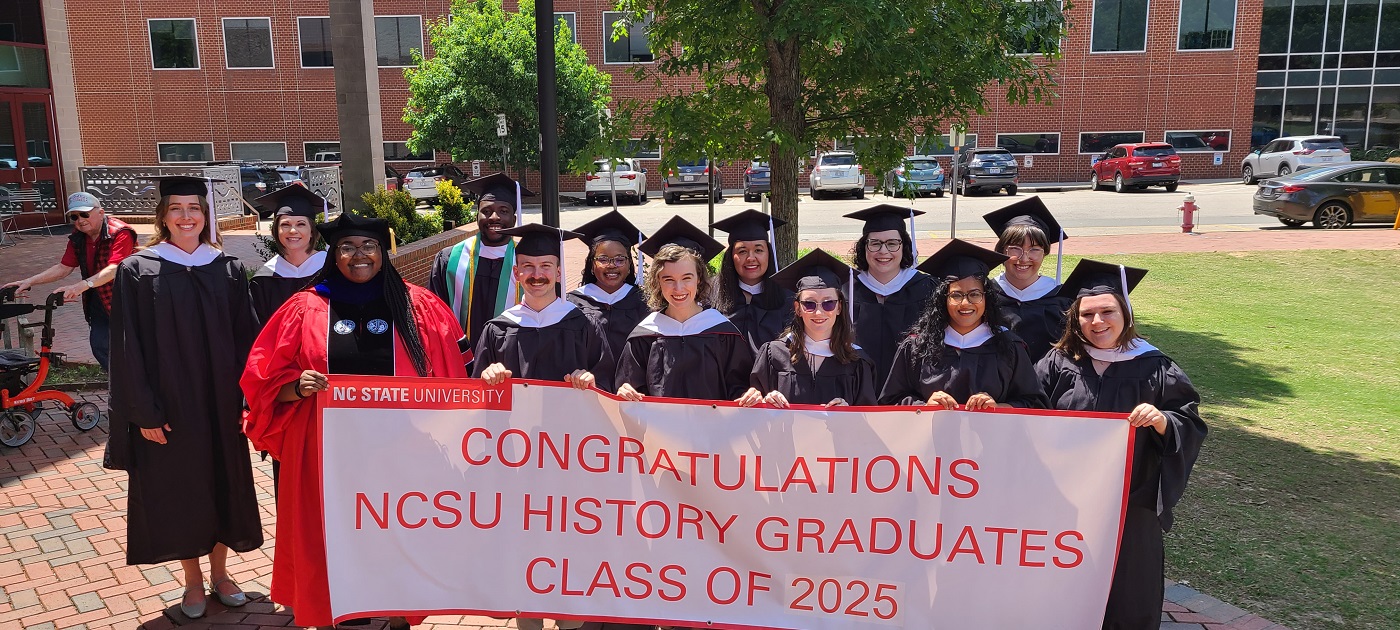Alumna Joanna McKnight Helps Preserve History in New England
A calling to preserve historic buildings is what led NC State alumna Joanna McKnight to Historic New England — the oldest and largest regional heritage organization in the nation.
McKnight (History ’11) is the preservation services manager for the northern New England territory with Historic New England. She lives in Dover, N.H., but helps create easements at the request of property owners throughout the region who want to preserve their historic homes or buildings.
A preservation easement is a legal agreement used to protect significant building and landscape features of a historic property. The property owner and a qualified preservation organization, the easement holder, sign a legal document that gives the easement holder certain rights and responsibilities associated with perpetual protection.

An easement holder has the responsibility to preserve the architecture of buildings and landscape features outlined in the easement while also working with the homeowner on any proposed changes.“Easements prohibit demolition of historic resources and can prevent lot subdivision,” says McKnight. “Historic New England’s easements also provide for project review to ensure that any proposed changes to the historic house or landscape are carried out sensitively and do not damage or destroy protected elements.”
“It’s important to find that balance in working to establish a relationship with someone that feels they have property rights and helping them understand we also have easement rights as an easement holder,” says McKnight. “It’s just a balance between owner and holder.”
While at NC State, McKnight did an internship with Preservation North Carolina. After graduating, she went on to earn a master’s degree in architectural history and a graduate certificate in historic preservation from the University of Virginia.
During her time with Preservation North Carolina, McKnight researched buildings and wrote a historic register. Her work there helped McKnight discover her career path.
“I learned about architectural history regarding tons of different places and wanted to figure out what I wanted to do from there.” she said. “The easement position appealed to me because you have the strength of a non-profit organization behind you and you can help homeowners that want and need help with their buildings.”
North Carolina and Virginia were all McKnight knew before making the move to Dover, N.H. Her office is just five miles away in Maine. “It was intimidating moving from the South, having lived in North Carolina and Virginia my entire life,” she says, “but I wanted to experience living somewhere completely different to break out of my comfort zone.”
Living in an old textile mill building, McKnight has an appreciation for the history associated with buildings. The converted mill she lives in is large enough to house residential apartments, offices, restaurants and even a yoga studio.
“Mills were the lifeblood of New England in the 1800s and they’re huge massive buildings,” she says. “In the past 10 years, it’s become a more popular and feasible development tool for private developers to rehabilitate these buildings.”
McKnight is responsible for the preservation easements of historic buildings and homes in a territory ranging from just above Boston up to the Canadian border. Her favorite homes to work with are very different from today’s modern homes.
“It’s really cool to see how people lived,” she says. “Anything where you can see the technology behind the way people lived is really cool, so I like seeing working spaces like kitchens, basements and servants’ quarters.”
The negative connotation of an easement is often the hardest part to overcome when working with property owners who are hesitant about signing preservation documents, McKnight says. “We try to show them that we’re a resource to the homeowner instead of a restriction,” she says.
- Categories:


